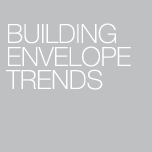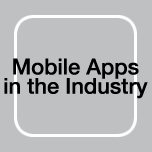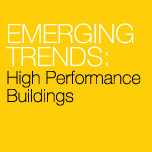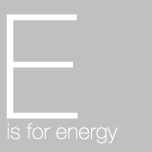As a society we have become increasingly aware of the impact of our behavior on the global environment. We have found ourselves, in a short period of time, altering both personal and business practices to become environmentally responsible. These changes are evident through the cars we see advertised, the products we use and the homes that are being constructedthe cars we see advertised, the products we use and the homes that are being constructed in our towns and cities. It has spawned a wave of reform among product manufacturers looking for ways to compete in this fragmented market, a shift that is particularly visible in the building and construction industry.
According to research conducted by the U.S. Green Building Council (USGBC), buildings in the United States account for 72% of electricity consumption, 38% of all carbon dioxide (CO2) emissions, 40% of raw materials use and 30% of waste output (136 million tons annually). As people look to increase energy efficiency, reduce waste output and help the overall health of their buildings and homes, manufacturers are diligently working on creating and marketing products that fit into a green category.
But it’s also spawned a new term: greenwash. No matter how many times you hear the term “green,” it doesn’t mean the same thing for even the same types of products, and some manufacturers are using the term rather carelessly. The market is now cluttered with sustainable products and green claims, and the onus to determine the validity of manufacturers’ claims too often lies with the builder, architect or product specifier. As you sort through the abundance of product information available via marketing materials, websites and on-sire meetings and seminars, the question has shifted from how do I find a green product that will fit my needs to how do I know if a product is truly green?
No answers without questions
French anthropologist, Claude Levi-Strauss said, “The wise man doesn’t give the right answers - he poses the right questions.” While reviewing product materials and flyers, you should be creating questions that will challenge the manufacturers on their claims. Look beyond the data on the paper and ask the manufacturers how they came up with numbers, the circumstances involved in studies, the factors involved in product testing and what makes a specific product “high-performance.”
Any manufacturer should be equipped to provide detailed information on how and why a product is green. If you are speaking with a salesperson, and they refer you back to the marketing piece you just read, see if someone else in the organization can provide specifics. The need to provide these answers is one of the reasons some manufacturers have Leadership in Energy and Environmental Design (LEED) specialists or sustainable services experts on staff.
Take the time to ask the simple, but also the difficult questions. If a manufacturer is unable or seems unwilling to provide comprehensive information about why their product is green then it is likely the reason is that the product truly isn’t green.
This requires research, which requires time and resources. But think about this: How many people today purchase a car without reviewing Consumer Reports, asking a dealer some detailed questions or doing other research? The same process will apply to green products, and the people who are buying those products need to use the same diligence. At the same time, you’ll find that asking the right questions will not only make you wiser, but will help you create a finished project that will please even the most discerning clients.
Look beyond the label
One challenge that those who buy green products face is how to determine the properties and factors that make that product worthy of a green label. Words like “natural” or “eco-friendly” are vague – they sound nice in marketing materials, but they are not words that are regulated or certified in any manner. People who are seeking green products should look for words like “recycled” or “organic,” which are more closely examined by the federal government. Products made from salvaged or recycled materials are definitely considered green, as are those made from sources that are rapidly renewable. Then, too, products that save energy or water, or reduce pollution and waste from operations are also green.
Most important to builders is to keep the overall objective of the project in mind in light of the green aspect. According to Alex Wilson, president of BuildingGreen and publisher of GreenSpec, “Even in the greenest of projects, it is likely that many products will be used that aren’t themselves green—but they are used in a manner that helps reduce the overall environmental impacts of the building. Creating a green building means matching the products and materials to the specific design and site to minimize the overall environmental impact.”1
That means, for example, if you use bamboo as your wood flooring, it may appear that you are using a more sustainable option since it’s a rapidly renewable wood source. However, if the home you are building is in Georgia, but the bamboo is imported from China, the overall environmental impact of the product may be negative since much energy was used to get that product to market.
Bring it back up
One of the best ways to ensure that when manufacturers claim they have the best pr most green product, they are indeed telling the truth, is to look at what backs up their claims. Third-party certification can help you determine what products have had specific environmental claims verified. Because green certifications are voluntary in the manufacturing industry, they demonstrate that manufacturers are genuinely interested in being taken seriously by specificers who want to purchase products with verified green claims. The standards set by third party certifiers are often fairly detailed, and criteria is available online that can help builders or designers easily identify whether a certified product meets green standards. A few to keep in mind (though the list grows daily) are Greenguard, Green Seal, ENERGYSTAR, Environmentally Preferable Products, Forest Stewardship Council and Cradle to Cradle. In addition, the Federal Trade Commission has published a list of Environmental Marketing Guidelines that give manufacturers a list of rules to follow when marketing products as green.
The future of green products and sustainable building
The demand for green – homes, products, food items, etc. – will continue to increase. A new study, released July 2008, by McGraw-Hill Construction and the USGBC found that in today’s tough housing market, 70% of respondents to the survey’s study said they are more or much more inclined to buy a green home over a conventional home.
As our basic economics lessons have taught us, supply and demand are interrelated – there will continue to be a wave of product manufacturers creating green products and making green claims. The building and construction industries are headed in the sustainable direction, but we all know that it will take a great deal of effort on everyone’s behalf to create a greener world. Nineteenth century social activist Elizabeth Cady Staton, said, “Reformers who are always compromising, have not yet grasped the idea that truth is the only safe ground to stand upon.” The more the industry researches products, asks questions and seeks the truth behind green-product claims, the less our environment will be compromised.
---
Dana Castle is the principal and director of strategy for Function:, an integrated marketing agency that specializes in reaching the building, architecture and design community. Responsible for business development and strategic planning, Castle’s industry expertise drives top-level campaigns. Castle can be reached at [email protected]

Business is about making connections. It's who you know and connecting them with what you have to offer. And that is what Function: does - ...
: READ MORE
1. Attack the Market at a Regional Versus National Level Define a manageable amount of key regional markets, approximately six to eight, and focus ...
: READ MORE
A scene in the film Minority Report shows a flat screen TV greeting customers at stores with personalized ads. The Hunger Games’ notorious capitol society ...
: READ MORE
Function: remains engaged with our clients target audiences to better understand their habits, thought processes and to stay ahead of industry trends. This enables us ...
: READ MORE
In the age of social media, smart phones and online meeting tools, many people find themselves yearning for face-to-face interaction. Companies who put extra effort ...
: READ MORECarl Seville, GBA Advisor It isn't easy to meet the energy and water requirements set by the LBC The Living Building Challenge uses the flower ...
: READ MOREby Carl Seville, GBA Advisor This new non-profit has a solid pedigree and lofty goals Image 1 of 4 Adam Deck, the director of the ...
: READ MOREBy Carl Seville, greenbuildingadvisor.com How I learned more than I expected at an affordable housing conference I recently learned that in Georgia, as well as ...
: READ MOREBy Laura Davis, AIA, Dallas Architect There’s more to choosing an architect than what you’ll see in a résumé or proposal. Dallas Architects, Laura Davis, ...
: READ MOREBy Megan Tinkler, meganleanne.com Often times the term “modern design” is misused and misinterpreted by the general public. It is thrown around casually to describe ...
: READ MORE
Two-thirds of architects and designers, contractors and builders are using mobile apps. But out of those, what percentage are using mobile apps for business purposes? ...
: READ MOREIt's no secret that product manufacturer websites are a key resource for product specification. On the other hand, did you know claims from the manufacturer ...
: READ MOREby Ted Hettick, New Business Director, Function: During one of our Construct Knowledge Series Webinars, an editor asserted that 75% of information would be gathered ...
: READ MOREIn a year when large building and construction companies still felt the economic ripples of a hard-hit industry, Brian Zeis, president of Anjer Construction, said ...
: READ MOREOscar Wilde once said, “There is only one thing worse than being talked about, and that is not being talked about.” Today, in the age ...
: READ MOREContractors’ schedules are fast-paced and demanding. With more days spent out of the office than in, contractors often have little time to check email, browse ...
: READ MOREFunction: recently surveyed over 1,000 Manufacturers to examine the outlook for marketing building products in 2011. Through this research, we identified the direction of marketing ...
: READ MOREby Ted Hettick, New Business Director, Function: If you've met with me in person recently, you probably heard me talking about the contractor trend study ...
: READ MORE
Researchers in the UK are attempting to create something radical for the building industry: a living building skin. Like coral, this carbon negative compound is ...
: READ MOREby Ted Hettick, New Business Director, Function: The other day I had the chance to visit with TVS Design's Sustainable Studio Director, Susie Spivey-Tilson. As ...
: READ MOREIt’s important to tailor any marketing approach to the specific product and company, but with over twelve years of experience in this market, we at ...
: READ MORESure Social Media is a fun way to kill time with pointless status updates, playing games, sharing pictures, reuniting with old friends and keeping tabs ...
: READ MOREby Ted Hettick, New Business Director, Function: Ever heard of FUMIFU? I am a big proponent of acronyms and this one stuck with me. I ...
: READ MOREIn PR, knowing market trends is a foundational element of doing business. In the last few years, nothing has made a bigger impact than the ...
: READ MOREICC, ANSI, ASTM, ISO, ASHRAE - the string of monikers floating around in the world of building codes is a long one. And on March ...
: READ MORE
by Ted Hettick, New Business Director, Function: As we move into March of Twenty Ten, we find winter begrudgingly winding down and tax season winding ...
: READ MOREOpening his State of the Union address with a reference to the periods of economic trouble America has faced and endured in the last century, ...
: READ MORERecently, Function conducted a Webinar on the changing face of media relations. We brought in some of the most well respected and knowledgeable media experts ...
: READ MOREA New Culture For years the American mindset was “greed is good” (á la Gordon Gekko in the 1987 movie “Wall Street”). We produced a ...
: READ MOREThere was a time that marketers reached their audiences solely through print – printed pieces of mail, printed advertisements in magazines and newspapers, and printed ...
: READ MORE
by Jessi Probus, PR, Function:photo credit: Nationalgeographic.com It finally happened. Thanks to Al Gore, polar bears, and time-lapse glacier photos, being green is trendy. Celebrities ...
: READ MOREby Joslyn Fagan, Director of Public Relations, Function: For those of you who read this blog regularly (you are out there, right?), you may remember ...
: READ MORE
by Joslyn Fagan, Director of Public Relations, Function: As the mother of a six-month-old I spend a lot of time reading books that are designed ...
: READ MOREAs a society we have become increasingly aware of the impact of our behavior on the global environment. We have found ourselves, in a short ...
: READ MOREIn today’s tight market, competition is fierce. People and businesses are competing for jobs, clients and projects – using whatever means necessary to win. However, ...
: READ MOREBuilding Information Modeling, or BIM, is a design movement that has captured the interest of the industry and created a huge “buzz.” There’s still much ...
: READ MORE